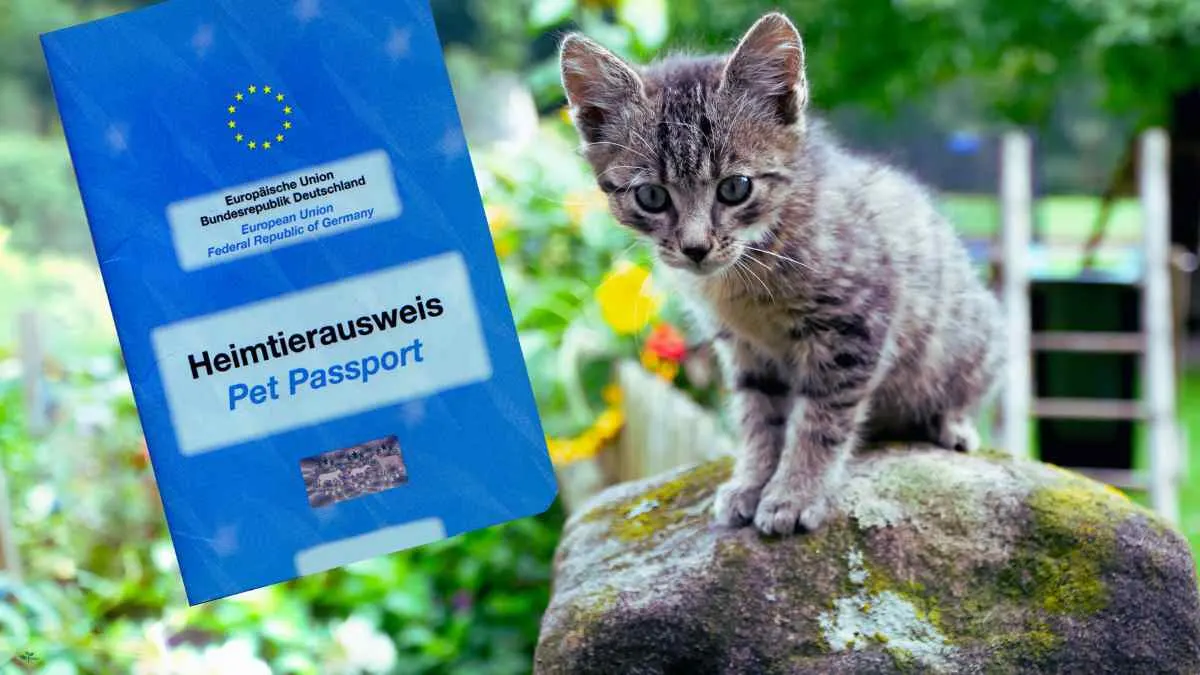Traveling with your pet requires careful planning, and obtaining the necessary documentation is a crucial first step. A pet passport—or its equivalent—ensures that your furry companion meets the health and safety requirements for international travel. However, the process and timeline for acquiring this documentation can vary depending on your location and destination.
This guide provides an in-depth look at the How Long Does It Take To Get A Pet Passport in the UK, EU, and US, along with answers to frequently asked questions (FAQs).
How Long Does It Take To Get A Pet Passport:
1. United Kingdom: Transition from Pet Passports to Animal Health Certificates:
Since Brexit, the UK’s pet travel regulations have changed. Previously, UK-issued pet passports allowed pets to travel freely within the EU. However, post-Brexit, the UK is considered a “Part 2 listed” country under the EU Pet Travel Scheme, meaning UK-issued pet passports are no longer valid for entry into the EU. Instead, UK pet owners must obtain an Animal Health Certificate (AHC) for each journey.
Timeline for Obtaining an AHC:
-
Microchipping: Your pet must be microchipped before receiving any vaccinations. This can be done on the same day as the rabies vaccination.
-
Rabies Vaccination: Administered at least 21 days before travel. If your pet has never been vaccinated for rabies, this is the first vaccination you will need to get.
-
Tapeworm Treatment: For dogs, administered 24 to 120 hours before re-entering the UK.
-
AHC Issuance: Can be issued by an official veterinarian (OV) within a day, provided all requirements are met.
Total Estimated Time: Approximately 4–6 weeks, considering the waiting period after the rabies vaccination.
Note: If you’re traveling to Northern Ireland from Great Britain, the same requirements apply. GOV.UK
2. European Union: EU Pet Passport System
In the EU, the pet passport system allows pet owners to travel freely with their dogs, cats, and ferrets within the member states. This system is convenient and widely accepted, allowing pets to travel without quarantine as long as they meet certain health requirements.
Timeline for Obtaining an EU Pet Passport:
-
Microchipping: Must be done before the rabies vaccination.
-
Rabies Vaccination: Administered at least 21 days before travel.
-
Tapeworm Treatment: For dogs, administered 24 to 120 hours before travel to certain countries.
-
Passport Issuance: Typically issued on the same day as the veterinary examination.
Total Estimated Time: Approximately 3–4 weeks, considering the waiting period after the rabies vaccination.
Note: The EU Pet Passport system is available only to pets that are microchipped and have valid rabies vaccinations. Pet Abroad
3. United States: Pet Travel Documentation
In the US, there isn’t a standardized “pet passport.” Instead, pet owners must gather specific documents required by the destination country.
Timeline for Obtaining Pet Travel Documentation:
-
Microchipping: Must be done before the rabies vaccination.
-
Rabies Vaccination: Administered at least 21 days before travel.
-
Health Certificate: Issued by a USDA-accredited veterinarian within 10 days of travel.
-
USDA Endorsement: Required for international travel; processing time varies.
Total Estimated Time: Approximately 4–6 weeks, considering the waiting period after the rabies vaccination and USDA processing times.
Note: The specific requirements may vary depending on the destination country. It’s essential to check the destination country’s pet importation regulations well in advance of your trip. APHIS
Recommended: 6 Best Places To Travel With A Dog In Europe
General Tips for Pet Passport Preparation:
-
Start Early: Begin the process at least 2–3 months before your planned travel date to allow enough time for vaccinations, treatments, and paperwork.
-
Consult Your Veterinarian: Ensure your vet is authorized to issue the necessary documentation and is familiar with the travel requirements for the country you plan to visit.
-
Keep Records: Maintain thorough records of your pet’s vaccinations, treatments, and certificates. This will help you stay organized and avoid delays when submitting your paperwork for approval.
-
Check Destination Requirements: Different countries may have additional requirements, such as rabies titer tests or specific treatments. Always check the specific pet travel regulations for the country you are visiting.
Last words:
- Obtaining a pet passport or equivalent documentation is a vital step in ensuring your pet can travel internationally. The timeline for obtaining these documents varies by country and destination, but with proper planning and adherence to regulations, you can ensure a smooth journey for both you and your pet.
- Always consult with your veterinarian and the relevant authorities to stay updated on the latest requirements.
Common Questions:
1. How Long Does It Take To Get A Pet Passport?
The process for obtaining a pet passport or travel documentation typically takes 3 to 6 weeks. The timing depends on factors like vaccination waiting periods, microchipping, and the specific requirements of the destination country.
2. Can I Get a Pet Passport for My Dog?
Yes, you can get a pet passport for your dog, provided it meets the vaccination and microchipping requirements. In the UK and EU, pet passports are issued by licensed veterinarians, while in the US, pet owners must gather specific documentation for international travel.
3. Is a Pet Passport Required for Traveling to All Countries?
Not all countries require a pet passport. Some countries may have their own entry requirements, such as health certificates or rabies titer tests. Always check the specific pet travel regulations for the country you are visiting.
4. Can I Travel with My Pet Immediately After Getting Their Rabies Vaccination?
No, you must wait 21 days after the rabies vaccination for it to become effective. This waiting period is necessary before your pet can travel internationally.
5. Do I Need a Pet Passport for Domestic Travel?
In most cases, a pet passport is only required for international travel. However, some countries, like the UK, may have specific pet travel requirements for entry or re-entry, so it’s always a good idea to check local regulations.

